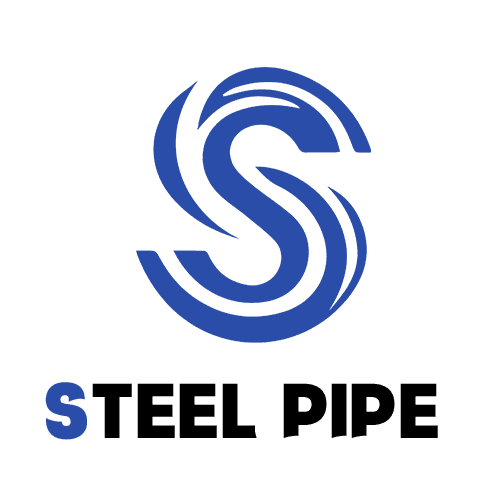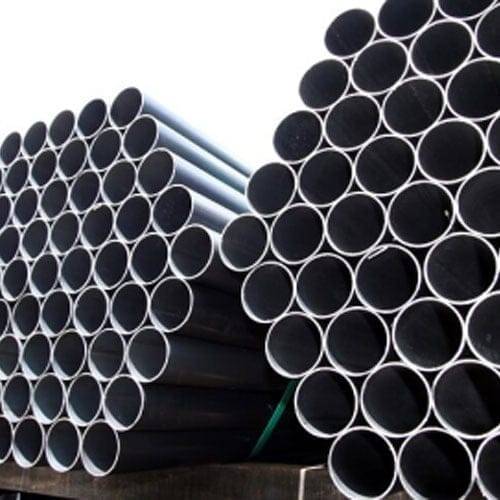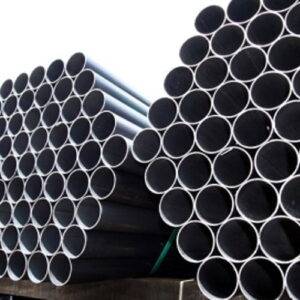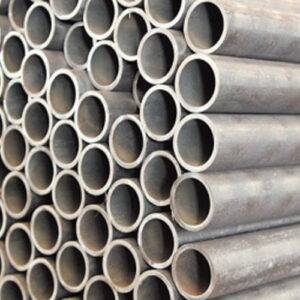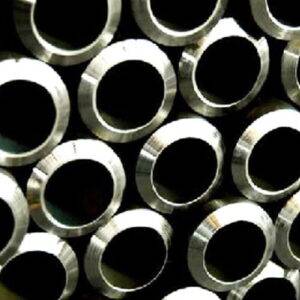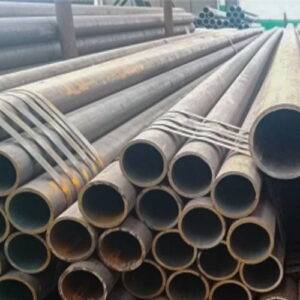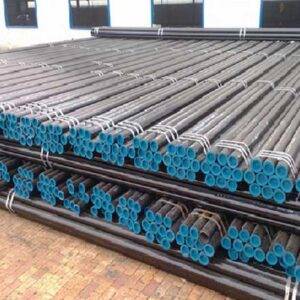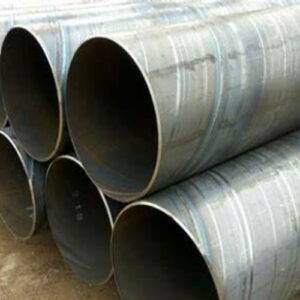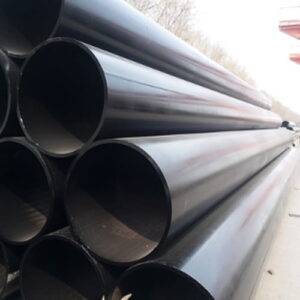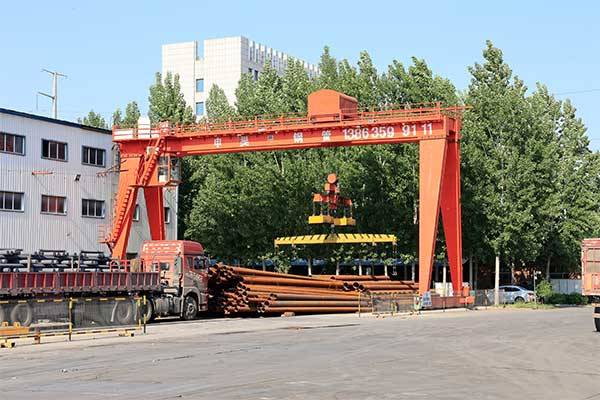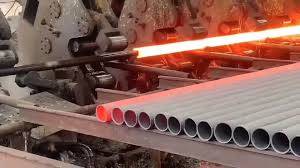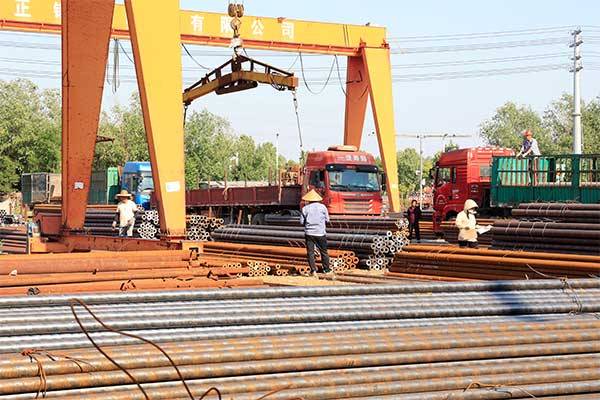Introduction
The choice between seamless carbon steel pipe and welded steel pipe is a critical decision in many industries, including construction, manufacturing, and energy production. Each type of pipe has its unique properties, benefits, and drawbacks, making it essential to understand their differences and applications. This comprehensive guide will delve into the characteristics of seamless carbon steel pipes and welded pipes, helping you determine which is better suited for your specific needs.
What is a Seamless Carbon Steel Pipe?
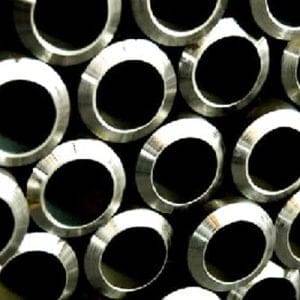
Manufacturing Process
Seamless carbon steel pipes are produced through a process that involves heating a solid billet or steel round to a high temperature and then piercing it to create a hollow tube. This method eliminates the need for welding and ensures that the pipe is seamless, with no joints or welds. The process typically includes the following steps:
Billet Heating: The steel billet is heated to a high temperature.
Piercing: A mandrel pierces the billet to create a hollow tube.
Elongation: The tube is elongated and shaped using rolling and extrusion processes.
Sizing and Finishing: The pipe is sized to the required dimensions and subjected to various finishing processes.
Key Properties and Benefits
Seamless carbon steel pipes are known for their superior strength and durability. Key properties include:
- High Pressure Resistance: The absence of seams makes these pipes highly resistant to pressure, ideal for high-stress applications.
- Uniformity: Seamless pipes have uniform structure and consistent mechanical properties throughout.
- Corrosion Resistance: These pipes often exhibit better corrosion resistance due to the absence of welded joints.
- Versatility: They are suitable for a wide range of temperatures and environments.
Common Applications
Seamless carbon steel pipes are widely used in industries that require robust and reliable piping systems, including:
- Oil and Gas: Transporting oil, gas, and other fluids under high pressure.
- Power Generation: Boilers, heat exchangers, and condensers.
- Chemical Processing: Piping systems that handle corrosive substances.
- Automotive and Aerospace: Structural and high-pressure applications.
What is a Welded Steel Pipe?
Manufacturing Process
Welded steel pipes are produced by rolling steel plates or strips into a cylindrical shape and then welding the seam longitudinally or spirally. The primary methods for welding include:
- Electric Resistance Welding (ERW): A process that uses electrical current to heat and fuse the steel edges.
- Longitudinal Submerged Arc Welding (LSAW): A process that uses an arc generated between an electrode and the steel to weld the seam.
- Spiral Submerged Arc Welding (SSAW): A process where the steel coil is welded spirally to form a pipe.
Key Properties and Benefits
Welded steel pipes offer several advantages, such as:
- Cost-Effectiveness: Generally cheaper to produce than seamless pipes due to simpler manufacturing processes.
- Availability: More readily available in larger diameters and longer lengths.
- Customization: Easier to manufacture in different shapes, sizes, and specifications.
- High Production Efficiency: Faster production rates make them suitable for large-scale projects.
Common Applications
Welded steel pipes are used in various industries and applications, including:
- Water Distribution: Piping systems for potable water and sewage.
- Structural Applications: Construction of buildings, bridges, and other infrastructure.
- Low and Medium Pressure Applications: Transporting fluids and gases at lower pressures.
- Mechanical Parts: Manufacturing of frames, supports, and other mechanical components.
Seamless Carbon Steel Pipe vs. Welded: A Detailed Comparison
To provide a clear comparison between seamless carbon steel pipes and welded steel pipes, here is a detailed table highlighting their differences:
| Feature | Seamless Carbon Steel Pipe | Welded Steel Pipe |
|---|---|---|
| Manufacturing Process | Pierced and rolled from solid billet | Rolled and welded from steel plates/strips |
| Strength and Durability | Higher due to lack of seams | Slightly lower due to welded seams |
| Pressure Resistance | Excellent for high-pressure applications | Good for lower to medium pressure applications |
| Corrosion Resistance | Better due to no welded joints | Varies based on welding quality |
| Cost | Higher | Lower |
| Availability | Limited in large diameters | Readily available in large diameters |
| Uniformity | Consistent mechanical properties | May have slight variations at welds |
| Customization | Limited | Highly customizable |
| Common Applications | High-pressure and critical systems | Structural, water distribution, and low-pressure systems |
Factors to Consider When Choosing Between Seamless and Welded Pipes
Application Requirements
When choosing between seamless and welded pipes, consider the specific requirements of your application:
- Pressure and Temperature: Seamless pipes are better suited for high-pressure and high-temperature applications.
- Corrosive Environment: Seamless pipes generally offer better corrosion resistance.
- Structural Integrity: For applications requiring uniform strength and durability, seamless pipes are preferred.
Budget and Cost
Budget constraints play a significant role in the decision-making process:
- Cost-Effectiveness: Welded pipes are typically more cost-effective for large-scale projects and applications where extreme pressure and corrosion resistance are not critical.
- Long-Term Investment: Seamless pipes may have a higher initial cost but can provide better longevity and reliability in demanding environments.
Availability and Customization
The availability and customization options of the pipes are also important:
- Size and Shape: Welded pipes are more readily available in various sizes and shapes, making them suitable for diverse applications.
- Lead Time: If immediate availability is crucial, welded pipes are often the better choice due to faster production and delivery times.
Maintenance and Longevity

Inspection and Testing
Both seamless and welded pipes require regular inspection and testing to ensure their integrity and performance:
- Non-Destructive Testing (NDT): Methods such as ultrasonic testing, radiography, and magnetic particle inspection are used to detect flaws and ensure quality.
- Pressure Testing: Pipes are subjected to pressure tests to verify their ability to withstand operational conditions.
Common Issues and Solutions
Common issues that can affect the performance and longevity of pipes include:
- Corrosion: Regular maintenance and protective coatings can help prevent corrosion.
- Fatigue and Wear: Monitoring and replacing worn sections can extend the life of the piping system.
- Weld Quality: Ensuring high-quality welding practices can mitigate issues related to welded joints.
Conclusion
Choosing between seamless carbon steel pipes and welded steel pipes depends on various factors, including application requirements, budget, and availability. Seamless pipes offer superior strength, durability, and pressure resistance, making them ideal for high-stress and critical applications. Welded pipes, on the other hand, are more cost-effective, customizable, and readily available in larger diameters. Understanding the differences and benefits of each type can help you make an informed decision that meets your specific needs.
FAQ
What are the main differences between seamless carbon steel pipes and welded pipes?
The main differences lie in their manufacturing processes, strength, pressure resistance, cost, and applications. Seamless pipes are made from solid billets and offer higher strength and pressure resistance, while welded pipes are made by welding steel plates or strips and are more cost-effective and customizable.
Which type of pipe is better for high-pressure applications?
Seamless carbon steel pipes are better suited for high-pressure applications due to their uniform structure and lack of seams, which provide superior strength and pressure resistance.
Are seamless pipes more expensive than welded pipes?
Yes, seamless pipes are generally more expensive due to their complex manufacturing process. However, they offer better performance and longevity in demanding applications, which can justify the higher cost.
Can welded pipes be used in corrosive environments?
Welded pipes can be used in corrosive environments, but their performance depends on the quality of the welding and any protective coatings applied. Seamless pipes typically offer better corrosion resistance due to the absence of welds.
How can I ensure the quality of my piping system?
Regular inspection and testing, including non-destructive testing (NDT) and pressure testing, can help ensure the quality and integrity of your piping system. Proper maintenance, monitoring, and addressing issues promptly can also extend the life of your pipes.
